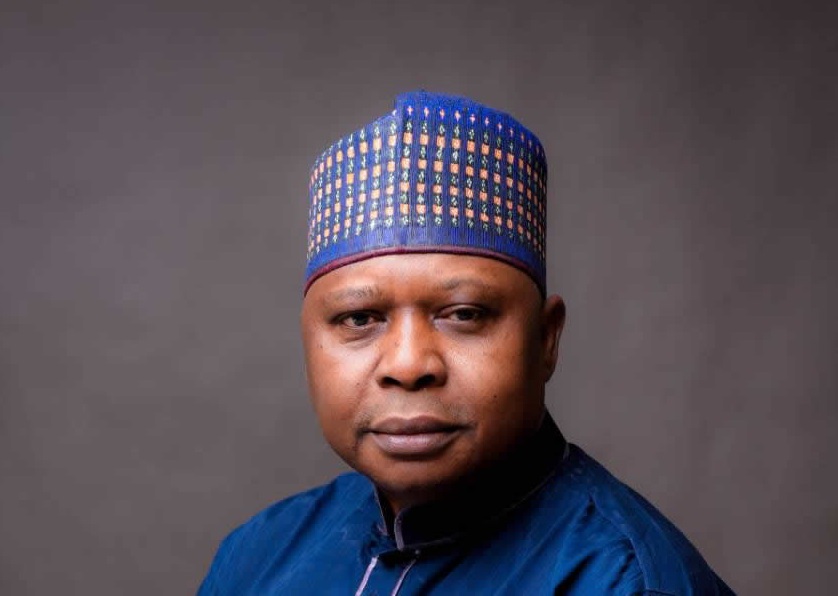
History does not lie. It remembers both the triumphs and the tragedies of human civilization. Among Africa’s most haunting historical injustices is Female Genital Mutilation (FGM) — a deeply entrenched practice that has inflicted generations of pain and suffering. To call FGM a shameful past is not an exaggeration. It is a past (and, sadly, a present) marked by physical pain, psychological trauma, and gender-based oppression. It is a wound in Africa’s history that has yet to heal. It is also a stain that some, even today, refuse to acknowledge.
In 1993, FGM was officially recognized as a form of violence against women and a violation of human rights (United Nations, 1993). Also, in 1995, the Beijing Declaration and Platform for Action advanced the international community’s commitment to ending FGM by galvanizing the support of national governments (United Nations, 1995).
However, while girls are one third less likely today to be subjected to the harmful practice than 30 years ago, rapid population growth in some African communities where FGM still persists threatens to roll back progress (Shell-Duncan et al., 2016; UNFPA, 2019; UNICEF, 2020). Without concerted and accelerated actions, an estimated 68 million additional girls – many mostly from African communities – will have been subjected to FGM by 2030 (UNFPA, 2019).
The silence surrounding FGM in many African communities has reinforced a culture of culpable ignorance—one that enables violence, allows pain to fester, and ensures that oppressive customs persist under the guise of heritage. But when did silence become an acceptable response to injustice? For years, FGM has been practiced (and continues to be practiced) under the banners of tradition, morality, and social conformity, but the reality is stark: it is not about culture—it is about control, pain, and oppression. The act itself is barbaric, its consequences devastating, and its justification indefensible.
To end this cycle, we must acknowledge the truth about FGM, reject the excuses that have kept it alive, and take decisive action to ensure that it becomes part of Africa’s past—not its future.
The Reality of FGM: A Legacy of Pain
FGM is a term that often feels distant to those who have not directly experienced its horrors. It is easy to speak about it in abstract terms. But to understand why it must be condemned, we must confront its reality:
A young girl, often between infancy and 15 years old, is forcibly restrained by women she trusts—her mother, grandmother, aunts, or female elders. A crude instrument—a razor blade, a piece of glass, a knife—is used to cut away part or all of her external genitalia. She bleeds. Sometimes uncontrollably. Sometimes to death. She is given no anaesthesia. Her cries go unheard. Her pain is dismissed as part of “becoming a woman.” If she survives, she faces lifelong complications: excruciating menstrual cycles, chronic infections, pain during urination and childbirth, and even infertility. Psychologically, she is never the same. The trauma of betrayal—of being hurt by those meant to protect her—scars her soul.
And yet, despite the overwhelming evidence of its harm, FGM continues. Why? Because the culture that enables it is built on control, silence, and a fear of breaking away from ‘tradition.’
A Forbidden Subject: The Silence that Sustains Violence
In many communities where FGM is practiced, it has become a forbidden concern—a topic that cannot be openly discussed. Those who speak out against it are branded as traitors to their culture or accused of trying to erase “African traditions.” This enforced silence is dangerous. It is a tool of oppression, ensuring that victims remain voiceless and that new generations continue to suffer. It is the same silence that once enabled slavery, child marriage, and ritual killings—evils justified by custom and enforced by fear. Today, it is allowing FGM to persist, unchallenged, in homes, villages, and nations.
The unwillingness to confront FGM has led to a culture of culpable ignorance and avoidance. Instead of addressing the issue, communities prefer to pretend it does not exist. They dismiss survivors’ testimonies. They suppress open discussions. They justify evil through repressive social norms.
The False Narrative of “African Identity”
One of the most common defences of FGM is that it is part of African identity and heritage. Critics are often accused of trying to impose “Western values” on African societies. But let’s be clear: African identity is not defined by oppression. Cultures evolve. They change, adapt, and progress. The Africa of today is not the Africa of 200 years ago. If we accept that slavery, tribal wars, and human sacrifices are no longer acceptable, why should we cling to FGM as though it is sacred?
Other societies have abandoned harmful traditions. China outlawed foot-binding, India banned sati (widow-burning), and Europe moved past public executions. These societies did not lose their identity by choosing humanity over barbarism. Likewise, Africa does not need FGM to remain African. If anything, rejecting it is an act of true cultural pride—a declaration that African women and girls deserve dignity, health, and freedom. We too can do same. We can decide to end this cycle of pain and oppression.
Breaking the Chains: What Must Be Done?
Despite the progress made, the fight against FGM is far from over. The laws exist, but enforcement is weak. Activism is growing, but stigma still silences victims. To truly end FGM, we must act decisively:
1. Enforce Laws with Zero Tolerance
Many African nations have criminalized FGM, but laws are meaningless without enforcement. Perpetrators must face real consequences. Governments must invest in tracking, reporting, and punishing those who violate the rights of girls.
2. Educate Families and Communities
FGM continues because many parents believe it is necessary for their daughters to be “accepted” in society. Education is key. Communities need to understand that FGM is not a requirement for dignity or marriage—it is a violation of basic human rights.
3. Support Survivors
Women who have endured FGM need more than sympathy—they need medical care, psychological support, and economic opportunities to heal and rebuild their lives.
4. Engage Religious and Traditional Leaders
Since FGM is often linked to religious or cultural beliefs, faith leaders and community elders must take a stand. Churches, mosques, and traditional institutions must actively condemn FGM and promote alternative rites of passage.
5. Change the Narrative
The shame of FGM should not fall on uncut women—it should fall on those who perpetuate the practice. Being uncut should not be a source of ridicule or rejection. The real disgrace lies in continuing a practice that dehumanizes women.
A Call to Conscience
History will judge us by how we respond to the suffering of the most vulnerable. Africa’s past is stained with the blood of millions of women and girls who have suffered under the blade of FGM. We cannot erase that past. But we can ensure that future generations do not suffer the same fate.
Hence, FGM is not a legacy worth preserving. It is a scar upon Africa’s conscience—one that will never heal until we acknowledge it, confront it, and eradicate it completely. Silence is not an option. Complicity is not an excuse. The choice before us is clear: continue the cycle of pain, or break it forever. The past was shameful. The future does not have to be. Which will we choose?
Uwaezuoke, a Catholic priest of the Archdiocese of Abuja, Nigeria, writes via [email protected]





